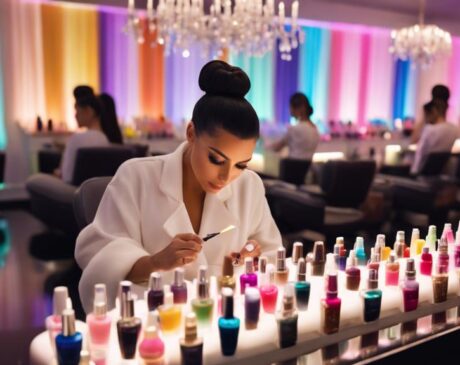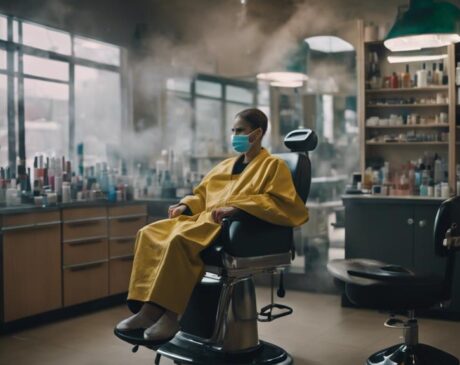What Type of UV Light Is Used to Cure Nails?
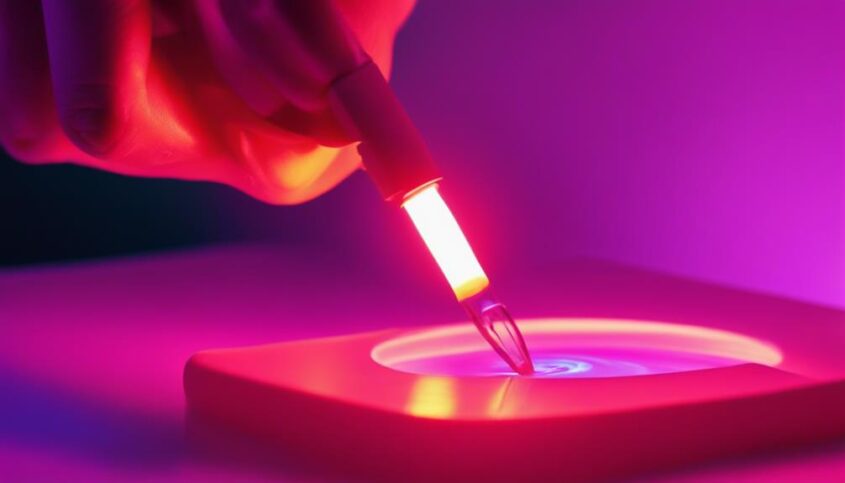
When curing nails, UVA light is the go-to UV type. It's the star in the nail-curing show! If you want to learn more about UV lights and nail care, there's a whole range of details waiting for you.
Key Takeaways
- UVA light is primarily used to cure nails in the nail curing process.
- UV fluorescent lamps emit a broad spectrum of UV light for curing nails.
- UV LED lamps are energy-efficient and commonly used for faster nail curing.
- Optimal wavelengths for curing nails range between 350 to 400 nanometers.
- Selecting the right UV light wavelength, like 365nm, is crucial for effective nail curing.
Understanding UV Light
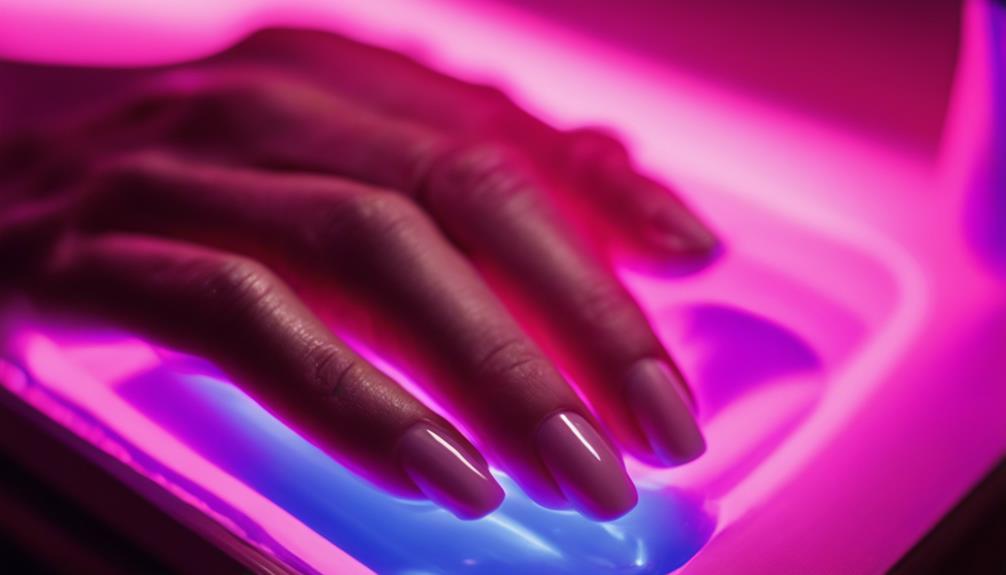
If you've ever wondered about the science behind UV light, you're about to dive into a straightforward explanation. Ultraviolet (UV) light is a type of electromagnetic radiation that falls outside the visible light spectrum. It has shorter wavelengths than visible light, making it invisible to the human eye. UV light is categorized into three types based on wavelength: UVA, UVB, and UVC. UVA has the longest wavelength and is commonly used in nail curing processes.
When UVA light interacts with certain chemicals in nail polish, it initiates a chemical reaction that results in the hardening or curing of the polish. This process is called photopolymerization. Essentially, the UV light acts as a catalyst that helps the molecules in the nail polish bond together, creating a durable and glossy finish on your nails.
Understanding the properties of UV light is crucial in the nail curing process. By harnessing the power of UVA light, nail technicians can efficiently cure nail polish, providing you with long-lasting and professionally finished nails.
Types of UV Lamps
Wondering about the various types of UV lamps used in nail curing processes? Let's dive into the innovative world of UV technology! When it comes to nail curing, there are primarily two types of UV lamps used: UV fluorescent lamps and UV LED lamps. UV fluorescent lamps have been the traditional choice, emitting a broad spectrum of UV light to cure various types of nail polishes. However, UV LED lamps are the latest innovation in the industry. They are more energy-efficient, longer-lasting, and have a faster curing time compared to UV fluorescent lamps. UV LED lamps also emit narrower wavelengths of UV light, which can be gentler on the skin and eyes.
For those looking to stay ahead of the curve, UV LED lamps are becoming increasingly popular due to their efficiency and effectiveness. Whether you prefer the tried and true method of UV fluorescent lamps or want to explore the benefits of UV LED technology, both options offer reliable nail curing solutions to keep your manicure game strong.
UVA Vs. UVB Light
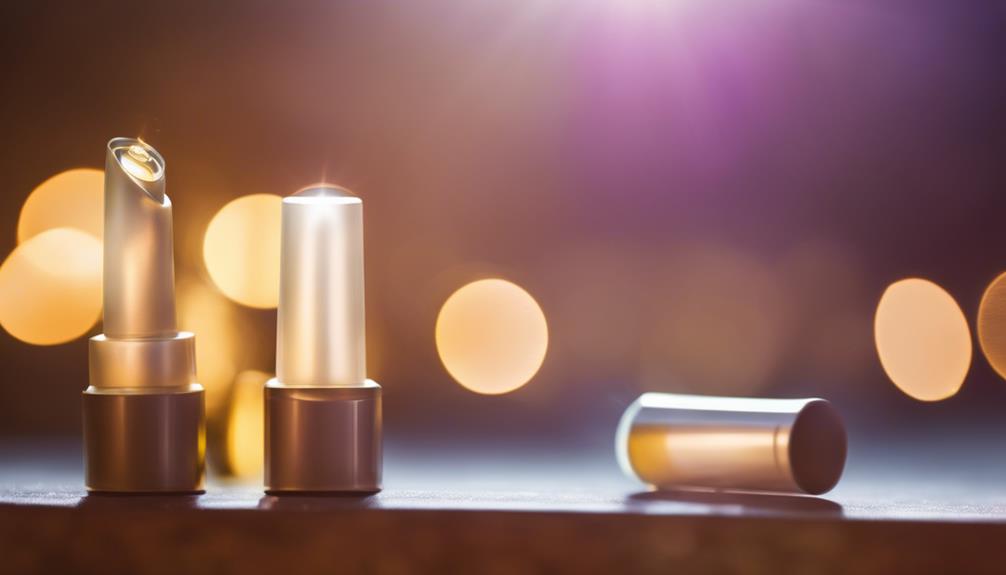
When comparing UVA and UVB light, it's essential to understand their differences in terms of wavelength and skin penetration. UVA light has a longer wavelength ranging from 320 to 400 nanometers, while UVB light has a shorter wavelength falling between 280 to 320 nanometers. The longer wavelength of UVA light allows it to penetrate deeper into the skin compared to UVB light, which is mostly absorbed by the outer skin layers.
In terms of skin effects, UVA light is responsible for skin aging, as it penetrates deeper and can cause damage to the collagen and elastin fibers. On the other hand, UVB light causes more immediate effects like sunburns and is a primary cause of skin cancer.
Understanding the differences between UVA and UVB light is crucial when considering nail curing procedures as it helps in selecting the appropriate light source that balances efficiency with safety.
Importance of Wavelengths
When it comes to UV light for curing nails, understanding the importance of wavelengths is key. The specific wavelength impacts how effectively the curing process occurs and the overall health of your nails. By focusing on the optimal light spectrum, you can ensure the best results for your nail treatments.
Wavelength Impacts Curing
To achieve optimal nail curing results, understanding how different wavelengths impact the curing process is essential. The wavelength of UV light used plays a significant role in determining the curing efficiency and the final appearance of the nails. Different wavelengths penetrate the layers of gel polish differently, affecting the curing speed and quality. Below is a table illustrating how various wavelengths impact the curing process:
| Wavelength | Curing Impact |
|---|---|
| 365nm | Deep curing, suitable for thicker layers |
| 395nm | Versatile, good for most gel polishes |
| 405nm | Quick curing, ideal for thinner layers |
| 420nm | Gentle curing, suitable for sensitive nails |
Understanding these wavelength nuances can help you achieve the best nail curing results based on your specific needs and preferences.
Optimal Light Spectrum
Understanding the importance of wavelengths in the optimal light spectrum is crucial for achieving the best nail curing results. When it comes to nail curing, the right wavelengths are like precision tools, ensuring that the gel polish is cured efficiently and effectively. The optimal light spectrum typically ranges between 350 to 400 nanometers, with 365 nanometers being the sweet spot for most gel polishes. This specific range is where the UV light is most effective at activating the photoinitiators in the gel polish, leading to a thorough and durable cure. By utilizing light within this range, you can maximize the curing process and achieve long-lasting, salon-quality results that showcase your commitment to innovation and excellence.
Effects on Nail Health
For optimal nail health, selecting the right wavelengths in UV light for curing is essential to ensure a safe and effective manicure experience. When considering the effects on nail health, keep in mind:
- Precision: Utilize UV light with specific wavelengths to target the curing process accurately.
- Protection: Opt for wavelengths that minimize potential damage to the nails during curing.
- Innovation: Explore newer technologies that offer safer and more efficient curing options.
Safety Considerations
Ensuring proper ventilation during UV nail curing procedures is essential for minimizing potential health risks. Adequate airflow helps disperse any fumes or vapors that may be emitted during the curing process, reducing the likelihood of inhalation and skin exposure. Additionally, wearing appropriate personal protective equipment such as gloves and goggles can provide an extra layer of defense against UV exposure.
When using UV light for curing nails, it's crucial to follow recommended exposure times to prevent overexposure and potential skin damage. Limiting the duration of exposure can help mitigate the risk of adverse effects on the skin and nails. Furthermore, maintaining the UV lamps regularly and replacing them as needed is essential for ensuring consistent and safe curing results.
Innovations in UV nail curing technology continue to focus on enhancing safety features, such as automatic timers and sensors that monitor UV intensity. Staying informed about the latest advancements in UV nail curing equipment can help you prioritize safety while achieving professional nail finishes. Remember, prioritizing safety ensures a healthy and enjoyable nail curing experience.
Alternatives to UV Curing

Looking for alternatives to UV curing for your nails? LED nail lamps, non-UV options, and health considerations are all key points to consider. These alternatives can provide a safer and healthier option for achieving beautifully cured nails without the potential risks associated with UV light exposure. Making informed choices about your nail care routine is essential for maintaining both the beauty and health of your nails.
LED Nail Lamps
Consider investing in an LED nail lamp as a safe and efficient alternative to UV curing for your nail care routine. LED nail lamps offer several benefits that make them a popular choice among beauty enthusiasts:
- Quick Cure Time: LED lamps can cure gel polish in seconds, saving you time and allowing you to get back to your day faster.
- Long-lasting: LED bulbs have a longer lifespan than traditional UV bulbs, reducing the need for frequent replacements.
- Energy Efficient: LED technology consumes less energy, making it an environmentally friendly choice for your beauty regimen.
Upgrade your nail curing experience with an LED nail lamp today for fast, long-lasting, and eco-friendly results!
Non-Uv Options
For a nail care routine that skips UV curing, explore the range of non-UV options available in the market. If you're looking to avoid UV light exposure, consider trying alternative methods like air-drying polishes or using quick-dry topcoats. Water-based nail polishes are another innovative choice that eliminates the need for UV curing. These polishes dry quickly without UV light and offer a safer option for your nails. Additionally, some brands offer gel-like nail polishes that cure under natural light, avoiding the potentially harmful effects of UV exposure. Embracing these non-UV alternatives can provide a convenient and healthier approach to achieving long-lasting, salon-quality nails without the need for UV light.
Health Considerations
What are the health benefits of opting for non-UV nail curing methods instead? If you're looking for innovative alternatives to UV curing for your nails, there are some exciting options that can benefit your overall health. Consider the following:
- LED Curing: Utilizes light-emitting diodes for curing, emitting less UV radiation.
- Non-UV Gel Polishes: Offer a safer option without the need for UV exposure.
- Air Dry Polishes: Quick-drying formulas that eliminate the need for any curing light.
These alternatives not only provide efficient curing but also reduce potential health risks associated with UV exposure, making them a great choice for nail enthusiasts seeking a healthier approach.
Frequently Asked Questions
Can UV Light Used for Nail Curing Harm the Skin?
You might wonder if UV light for nail curing can harm your skin. Well, it's crucial to shield your skin from prolonged exposure. Consider using sunscreen or protective gloves to safeguard yourself.
What Are the Potential Risks of Prolonged UV Exposure?
Exposure to UV light for extended periods can increase your risk of skin damage, premature aging, and skin cancer. It's crucial to limit UV exposure and protect your skin with sunscreen and proper clothing.
Are There Any Differences in UV Light Intensity Among Lamps?
Step into the light of understanding. Not all UV lamps are equal; some shine brighter than others. Remember, intensity matters when it comes to curing nails. Choose wisely for a flawless finish.
Can UV Nail Lamps Cause Skin Cancer?
UV nail lamps, while efficient for curing nails, can potentially increase the risk of skin cancer due to prolonged exposure. Consider using protective measures like sunscreen or limiting exposure time to minimize potential risks.
How Does the Wavelength of UV Light Affect Nail Curing?
When it comes to nail curing, the wavelength of UV light plays a crucial role. Different wavelengths affect the curing process differently. Understanding this dynamic can help you achieve faster and more efficient nail treatments.

